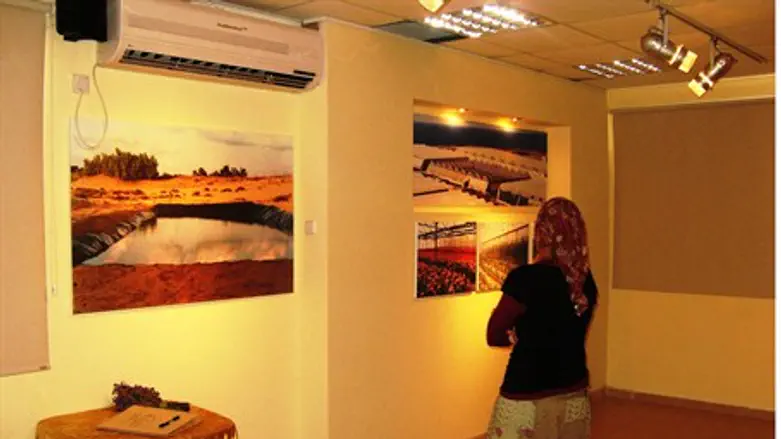
A new Gush Katif Legacy Center was recently established in the Golan Heights.
The center was established by former Gush Katif residents, who were expelled from their homes in the 2005 disengagement plan and resettled in the Golan Heights community of Avnei Eitan. It offers visitors a chance to learn about the history of Gush Katif through a photo exhibit, films and other activities.
“The museum’s inception came at a time when we were living in hotels after the expulsion,” Yossi Hadad, a member of the new center’s steering committee, told Arutz Sheva on Thursday. “As we longed for our homes that were destroyed, we understood that the Jews who lived in Gaza created a legacy and we decided that it would be important to convey that legacy to the general public.”
“The new center hosts a community project, in which we built a mosaic that shows real pictures from Gush Katif,” Hadad added. “We made paintings out of photos and, in a process which took about a year, we met once a week and formed the mosaic which is now four meters long.”
He noted that the center also has activities suitable for children. “We produced a huge game for children in which they are patrolling the streets of Gush Katif and can rebuild the communities there.”
On Wednesday it was announced that more than six years after the expulsion, families from Netzarim, Atzmona and elsewhere are finally settling down in new homes. The homes are in the new towns of Naveh and Bnei Netzarim, both a short distance from Gaza.
Bnei Netzarim is now home to 96 families, while Naveh houses 80.
21 families from Gush Katif currently live in the Golan Heights, according to Hadad, but they still live in makeshift “caravilla” homes that were meant to be used for no more than a few months.
In October, the administration celebrated the absorption of several dozen Katif families in Kibbutz Palmachim.
Many families expelled from Gaza have faced difficulty moving to permanent housing after being forced to use their compensation money to meet day-to-day expenses in the years after the expulsion. Others were able to save their money and build new homes in what the state has promised will be their new communities, but found themselves without water or electricity as bureaucracy slowed the construction of vital infrastructure.
Community leaders have warned that the remaining caravan sites are at grave risk in case of rocket attacks.

